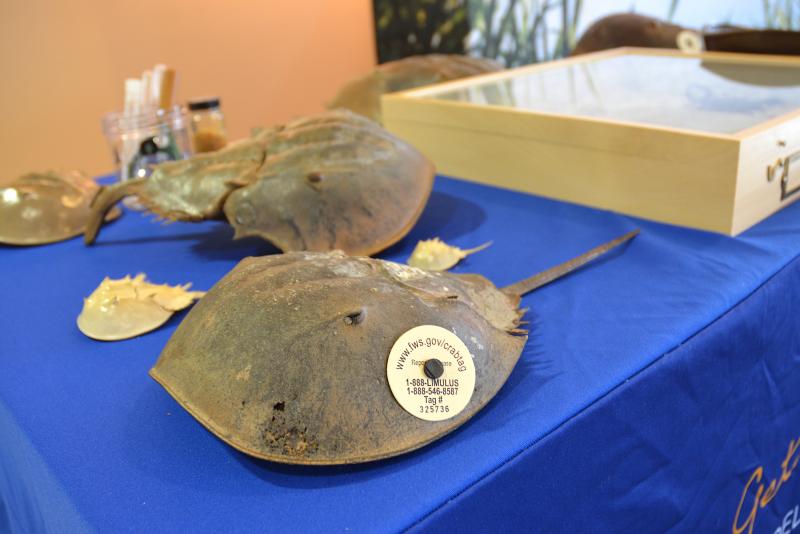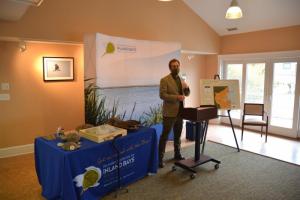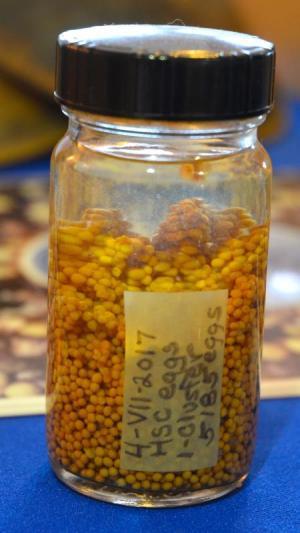Over 13,000 horseshoe crabs tagged by Center for Inland Bays
According to data supplied by Delaware Center for the Inland Bays, there’s been a 90 percent decline in the Atlantic Ocean population of horseshoe crabs since the early 1990s. Because of this, as part of an annual tagging program coordinated by the federal government, center volunteers have tagged more than 13,000 horseshoe crabs since 2002.
During a March 17 event at the center’s Indian River Inlet home, Marianne Walch, CIB science and restoration coordinator, said the tagging program has revealed that the population was much higher decades ago, the density of the population in the Inland Bays is similar to that of Delaware Bay and there’s good genetic diversity among the population.
There are roughly four to seven males for every female, which is much higher than the 2-to-1 minimum needed to ensure that diversity, said Walch. The tagging program has also shown the crabs have a regional population that stretches from New Jersey to Virginia, she said.
Chris Bason, Center for the Inland Bays executive director, began the event with a brief comment. Pointing to their use for medical research and commercial fishing, he said horseshoe crabs are economically important, but also serve as an environmental indicator for the health of the Inland Bays.
Tagging occurs annually during the spawning season, which is between May and June. Walch described the annual arrival of horseshoe crabs to the Inland Bay beaches for spawning as an amazing natural phenomenon. Not only are they reproducing, she said, those billions of eggs provide food and energy for migrating shorebirds, resident birds, fish and crabs.
In addition to the tagging program, the center conducts an annual survey of Inland Bays horseshoe crabs. Survey sites are scattered around the Inland Bays, including the beaches at Tower Road, James Farm, Ellis Point and Bay Colony. This year, there will be a new site at Camp Arrowhead.
Walch said the crabs travel to the bays’ sandy beaches at peak high tides near the new and full moons. On those nights, she said, volunteers move along the beach counting the number of crabs found within a one-square-meter quadrant.
That process is repeated 100 times per beach, said Walch.
The center has been doing the survey for as long as it’s been doing the tagging program, but Walch said they changed the methodology a handful of years ago to match the survey done for Delaware Bay beaches. She said the U.S. Fish and Wildlife Service, the federal agency that coordinates the program, wants 10 years’ worth of data before that information can be included with the data from other surveys. In a few years, that data set will be big enough, said Walch.
For more information on Delaware Center for the Inland Bays, or to volunteer for the survey, go to inlandbays.org or call 302-226-8105.
Chris Flood has been working for the Cape Gazette since early 2014. He currently covers Rehoboth Beach and Henlopen Acres, but has also covered Dewey Beach and the state government. He covers environmental stories, business stories and random stories on subjects he finds interesting, and he also writes a column called Choppin’ Wood that runs every other week. He’s a graduate of the University of Maine and the Landing School of Boat Building & Design.



























































